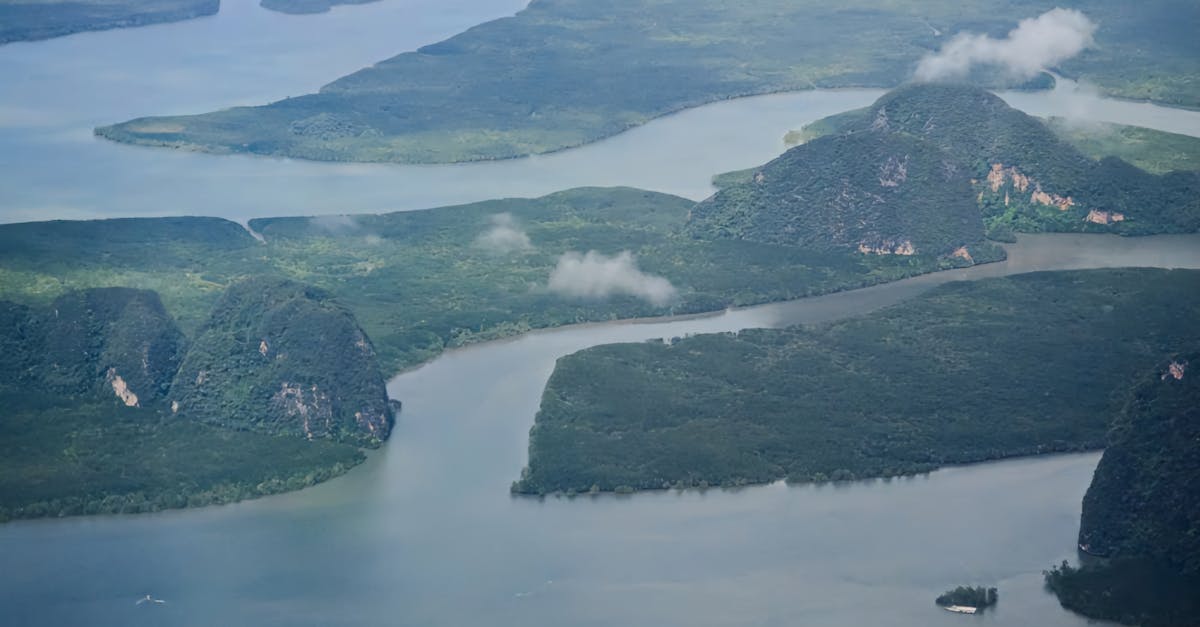Forex Reserves
Here are the key points and why in news for “Foreign Exchange Reserve”:
-
Significant Increase: India’s foreign exchange reserves surged by $15.267 billion to reach $653.966 billion in the week ending March 7, 2025, marking the largest increase in over two years. This is news because it reverses a recent declining trend and reflects a strengthening financial position.
-
Drivers of Increase: The sharp rise is primarily attributed to a $10 billion forex swap by the RBI, where dollars were bought to inject liquidity. This intervention influences the rupee’s exchange rate.
-
Components of Reserves:
- Foreign currency assets (FCAs) increased by $13.993 billion to $557.282 billion. FCAs are held in currencies like the US dollar, euro, pound sterling, and yen.
- Gold reserves decreased by $1.053 billion to $74.325 billion.
- Special Drawing Rights (SDRs) rose by $212 million to $18.21 billion.
- Reserve position with the IMF decreased by $69 million to $4.148 billion.
-
Importance of Forex Reserves: They provide liquidity for foreign exchange transactions, help manage balance of payments deficits, and allow the central bank (RBI) to intervene in Forex markets to influence the rupee’s exchange rate. A strong reserve level also enhances India’s international image, assuring trading partners of payment capabilities.
-
Historical Context: The reserves had previously declined due to revaluation and RBI interventions. They reached an all-time high of $704.885 billion at the end of September 2024.
-
Custodian and Global Ranking: The RBI is the custodian of India’s forex reserves. China currently holds the world’s largest foreign exchange reserves.

CAR T-Cell Therapy
-
Breakthrough in India: India’s first CAR T-cell therapy shows promising results, with a 73% success rate in clinical trials published in The Lancet. This is a world-class innovation done within the country.
-
How it Works: CAR T-cell therapy modifies a patient’s own T-cells to target and destroy cancer cells. T-cells are collected, engineered with receptors to bind to cancer cells, multiplied, and then infused back into the patient.
-
Target Cancers: This therapy is designed for specific blood cancers, particularly acute lymphoblastic leukemia and large B cell lymphomas, when other treatments have failed.
-
Affordability: The Indian-developed therapy is significantly cheaper (approximately $30,000) compared to globally approved CAR T-cell treatments (US$373,000–475,000), potentially improving access.
-
Availability: The therapy is now available at several hospitals across India, including Apollo, Fortis, Amrita and Max, among others.
-
Side Effects: Serious side effects, including hyperinflammation and organ damage (hemophagocytic lymphohistiocytosis), were observed in 12% of participants, resulting in at least one death. Other common side effects include low blood cell counts (red blood cells, platelets, neutrophils) and fever.
-
Why it Matters: CAR T-cell therapy offers a new option for patients with limited treatment alternatives. The Indian therapy’s affordability expands access to this advanced cancer treatment.
-
Regulatory Approval: India’s drug regulator granted approval based on unpublished results, forgoing a large Phase III trial but requiring a 15-year patient follow-up.
-
Ongoing Controversy: There are still concerns about potential long-term risks, such as secondary cancers due to genetic mutations.
Melioidosis
-
Melioidosis Seasonality: A study in Odisha, India, shows melioidosis infections peak during and after the monsoon season.
-
Causative Agent: The disease is caused by the bacterium Burkholderia pseudomallei, found in soil and water in tropical/subtropical areas.
-
Global Impact: The Lancet estimates 165,000 global melioidosis cases annually, with South Asia (including India) contributing 44%.
-
Diagnostic Challenges: B. pseudomallei requires specific lab conditions, potentially leading to misdiagnosis.
-
Treatment: Requires lengthy antibiotic treatment; incorrect diagnosis and inadequate treatment could lead to recurrence.
-
Environmental Factors: Rainfall, temperature, humidity, and solar radiation influence disease occurrence.
-
High-Risk Areas: Cuttack, Balasore, Khordha, and Jajpur districts in Odisha show high potential for melioidosis.
-
Climate Change Implications: Altered rainfall and extreme weather may increase disease spread and shift it to new areas.
-
Vulnerable Populations: Adults aged 40 to 60 with underlying conditions (e.g., diabetes) are more commonly affected.
-
Transmission: Spread through contact with contaminated soil, air, or water; not from animals to humans.
-
No Vaccine: There is currently no approved vaccine for melioidosis.
YUVA 3.0
- PM-YUVA 3.0 Launched: The Ministry of Education launched PM-YUVA 3.0 (Prime Minister’s Scheme for Mentoring Young Authors).
- Aim: To train young, budding authors (under 30) to promote reading, writing, and book culture. Builds on the success of previous PM-YUVA schemes.
- Themes: Focuses on perspectives of the young generation of writers on themes like Contribution of Indian Diaspora in Nation Building, Indian Knowledge System, and Makers of Modern India (1950-2025).
- Selection Process: 50 authors will be selected through an All India Contest conducted via MyGov portal. Proposals accepted until April 10, 2025. Selected authors announced May-June 2025.
- Mentorship: Selected authors receive training from established authors/mentors from June 30, 2025, to December 30, 2025.
- Financial Support: Authors receive a consolidated scholarship of Rs. 50,000 per month for six months (totaling Rs. 3 Lakh).
- Publication & Promotion: National Book Trust (NBT) publishes the completed books and translates them into other Indian languages, promoting ‘Ek Bharat Shreshtha Bharat.’ Authors receive a 10% royalty.
- National Book Trust (NBT): NBT, under the Ministry of Education, is the implementing agency.
- Opportunities: Selected authors engage with writers, participate in literary festivals, and promote their books and reading/writing culture nationally.
- Book Proposal: Contestants submit a 10,000-word book proposal, including a synopsis, chapter plan, sample chapters, bibliography, and references.
NECTAR
- Foundation Stone Laid: Union Minister of Science & Technology Jitendra Singh laid the foundation stone for NECTAR’s permanent campus in Mawdiangdiang, Shillong.
- Autonomous Institute: NECTAR is an autonomous institute under the Department of Science & Technology (DST), focusing on socio-economic development in the Northeast.
- Expansion: Established in 2014, NECTAR has expanded its reach across all eight northeastern states.
- Mission Saffron: NECTAR’s initiatives include Mission Saffron (launched in 2021), aiming to introduce saffron cultivation in the Northeast, potentially making the region a saffron hub.
- STEM Education Lab: A STEM Education Lab has been established in Shillong (developed in collaboration with IISER Pune and Smart Village Movement) to empower students with technologies like electronics, robotics, and 3D printing.
- Drone Technology & Flood Mitigation: NECTAR is involved in drone technology and using GIS and remote sensing for flood vulnerability assessments in Assam (Morigaon, Dhubri, and Majuli).
- Beekeeping & Honey Mission: NECTAR is working on Beekeeping and Honey Mission, diversifying its impact across sectors from bamboo to beekeeping.
- Focus & Identity: NECTAR is encouraged to focus on specific sectors to maximize resources and contribute to “Atmanirbhar Northeast” and “Viksit Bharat.”
- Purpose: NECTAR aims to apply appropriate technologies for development in the Northeast, focusing on biodiversity, watershed management, telemedicine, horticulture, infrastructure, and employment using local resources.
- Functions: NECTAR acts as a solution designer, provides technology assistance to state governments, offers technology-assisted decision support systems, and has a focus on technology reach.
Uniyala Keralensis
Here are the key points about “Uniyala keralensis”:
- New Species Discovery: A previously unidentified shrub, Uniyala keralensis, has been confirmed as a new species of the Uniyala genus, belonging to the Asteraceae family.
- Long Discovery Process: The first specimen was collected in 1998 but only recently confirmed as a distinct species after comparisons and reclassification of the Uniyala genus from Vernonia.
- Endemic Location: Uniyala keralensis is endemic to southwest India, specifically the Agasthyamala Biosphere Reserve (ABR) in Kerala’s Thiruvananthapuram district.
- Physical Characteristics: It’s a “small to large shrub” (1-3m) with light purple florets, larger leaves, longer petioles, and fewer lateral veins compared to related species like Uniyala comorinensis and Uniyala salviifolia.
- Habitat and Population: Found in open areas on western mountain slopes of the ABR, between 700-1400 meters elevation. The current population is estimated at 5,000 individuals in four subpopulations across 250 km².
- Flowering and Fruiting: Occurs from August to April.
- Conservation Status: Classified as Data Deficient (DD) by the IUCN (2024) due to limited data and population information.
- Naming Significance: The species is named keralensis after the State of Kerala. The genus Uniyala is named after plant taxonomist B.P. Uniyal.
- Publication: The findings were published in the journal Phytotaxa. The genus Uniyala comprises 11 species in southern India and Sri Lanka.

Pobitora Sanctuary
-
Drying of Tamulidoba Beel: A major wetland within Pobitora Wildlife Sanctuary is drying up, highlighting the need for habitat management. This is important as it impacts the ecosystem and wildlife dependent on it.
-
Location and Area: Pobitora Wildlife Sanctuary, established in 1998, is located in Assam near Guwahati, covering 48.81 square kilometers.
-
Flora and Fauna: Dominated by wet savannah grasslands, the sanctuary faces challenges from water hyacinth. It’s renowned for its high density of Great Indian One-Horned Rhinoceros, along with other animals and over 2000 migratory birds.
-
Historical Significance: Designated as a reserved area in 1971, Pobitora was included in the Indian Rhino Vision 2020 program. This emphasizes its role in rhino conservation.
-
Rhino Density: Pobitora holds the highest density of Greater One-Horned Rhinoceros in India, making it a crucial habitat for the species.
-
Tamulidoba Beel Importance: As a key wetland, Tamulidoba supports rhinos, buffaloes, and various water birds. Its degradation affects these species and the overall ecosystem. It attracts tourists and birdwatchers.
Raisina Dialogue
-
What: India’s flagship conference on geopolitics and geo-economics.
-
Why Important: Addresses critical international challenges and fosters discussions on global issues.
-
Who Attends: New Zealand PM, Foreign Ministers from 18+ countries, global executives, and foreign policy experts.
-
Format: Multi-stakeholder, cross-sectoral discussions involving government heads, ministers, private sector leaders, media, and academics.
-
Modeled After: Munich Security Conference and Singapore’s Shangri-La Dialogue.
-
Since When: Held annually in New Delhi since 2016.
-
Organizers: Hosted by the Observer Research Foundation (ORF) in partnership with the Ministry of External Affairs, Government of India.
-
Raisina Dialogue 2025 theme: Kalachakra: People. Peace. Planet.
Sentinels of the Northeast
- Relocation of Battalions: Union Home Minister Amit Shah recently announced the relocation of Assam Rifles battalions to Mizoram.
- Central Armed Police Force: Assam Rifles is one of the six Central Armed Police Forces (CAPFs) under the administrative control of the Ministry of Home Affairs (MHA). Why: Highlights its central government affiliation.
- Counterinsurgency Operations: It conducts counterinsurgency operations in North-eastern India. Why: Outlines a primary function.
- Operational Control: Operational control lies with the Indian Army, commanded by a Lieutenant General. Why: Emphasizes the unique dual control structure.
- Headquarters Location: Headquarters are in Shillong, unlike other central paramilitary forces based in New Delhi. Why: Points to a distinctive characteristic.
- Historical Origins: Originated in 1835 as the ‘Cachar Levy’ to protect British tea estates. Why: Gives historical context.
- Evolution: Evolved through various names and roles, including the ‘Frontier Force’ and participation in WWI. Why: Shows its transformation.
- Post-Independence Roles: Post-Independence, it participated in the Sino-India War (1962) and the IPKF in Sri Lanka (1987). Why: Demonstrates its diverse operational history.
- Growth: Grew from 17 battalions in 1960 to 46 battalions. Why: Illustrates expansion and increasing importance.